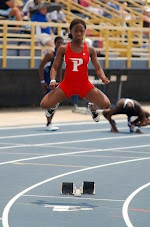Tourists visiting the Ohama Park in the Japanese city of Osaka have hurled so many titbits to the resident troupe of monkeys that some are so obese they can hardly walk.
The park has 50 Macaca mulatta monkeys, which generally weigh up to 11 kg in the wild.
 On a diet of crisps, bread and sweets provided by well-meaning visitors around a third of the monkeys are now overweight and the five leaders of the troupe tip the scales at more than 15 kg. The heaviest male weighs over 29kg and does little more than shuffle around the 420-square-metre enclosure waiting for the next hand-out, according to park officials.
On a diet of crisps, bread and sweets provided by well-meaning visitors around a third of the monkeys are now overweight and the five leaders of the troupe tip the scales at more than 15 kg. The heaviest male weighs over 29kg and does little more than shuffle around the 420-square-metre enclosure waiting for the next hand-out, according to park officials.The monkeys have been put on a special low-fat diet and signs have been put around the enclosure asking visitors not to feed them.
 The park estimates that as many as 20 people every day ignore the request.
The park estimates that as many as 20 people every day ignore the request.












